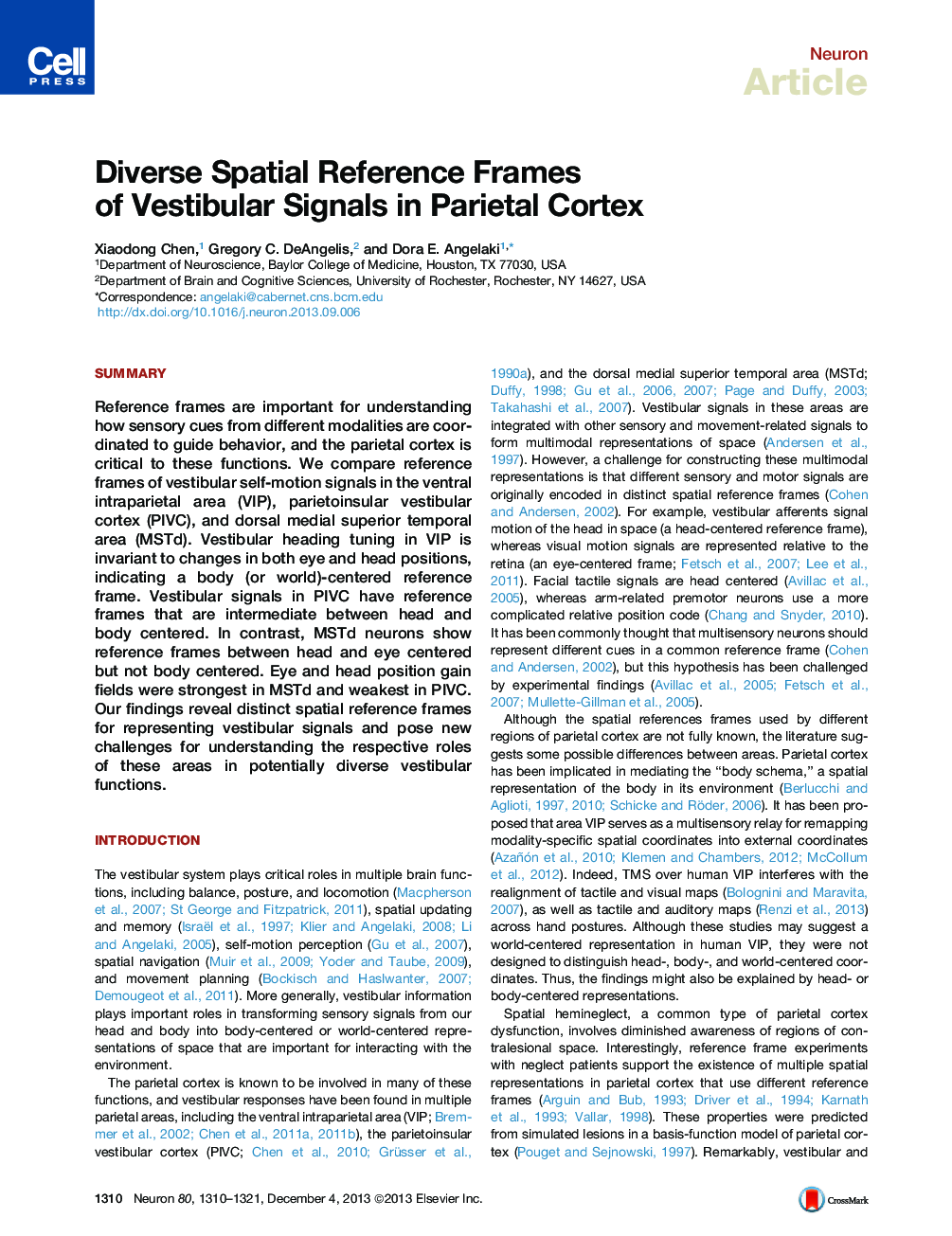| Article ID | Journal | Published Year | Pages | File Type |
|---|---|---|---|---|
| 4321287 | Neuron | 2013 | 12 Pages |
•Vestibular heading signals are represented in a body-centered reference frame in VIP•Vestibular reference frames in PIVC are intermediate between head and body centered•Reference frames in MSTd are broadly distributed between head and eye centered•Eye and head position gain fields increase in strength from PIVC to VIP to MSTd
SummaryReference frames are important for understanding how sensory cues from different modalities are coordinated to guide behavior, and the parietal cortex is critical to these functions. We compare reference frames of vestibular self-motion signals in the ventral intraparietal area (VIP), parietoinsular vestibular cortex (PIVC), and dorsal medial superior temporal area (MSTd). Vestibular heading tuning in VIP is invariant to changes in both eye and head positions, indicating a body (or world)-centered reference frame. Vestibular signals in PIVC have reference frames that are intermediate between head and body centered. In contrast, MSTd neurons show reference frames between head and eye centered but not body centered. Eye and head position gain fields were strongest in MSTd and weakest in PIVC. Our findings reveal distinct spatial reference frames for representing vestibular signals and pose new challenges for understanding the respective roles of these areas in potentially diverse vestibular functions.
